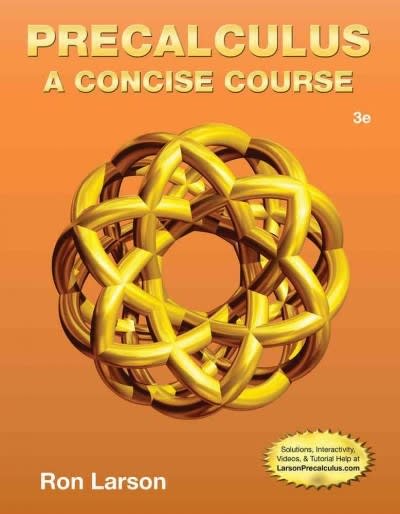Question
The bad debt ratio for a financial institution is defined to be the dollar value of loans defaulted divided by the total dollar value of
The bad debt ratio for a financial institution is defined to be the dollar value of loans defaulted divided by the total dollar value of all loans made. Suppose that a random sample of seven Ohio banks is selected and that the bad debt ratios (written as percentages) for these banks are 7%, 4%, 6%, 7%, 5%, 4%, and 9%.
a) Banking officials claim that the mean bad debt ratio for all Midwestern banks is 3.5 percent and that the mean bad debt ratio for Ohio banks is higher. (1) Set up the null and alternative hypotheses needed to attempt to provide evidence supporting the claim that the mean bad debt ratio for Ohio banks exceeds 3.5 percent. (2) Discuss the meanings of a Type I error and a Type II error in this situation. b
b) Assuming that bad debt ratios for Ohio banks are approximately normally distributed: (1) Use a critical value and the given sample information to test the hypotheses you set up in part by setting equal to .01. (2) Interpret the p-value of .006 for the test.
Step by Step Solution
There are 3 Steps involved in it
Step: 1

Get Instant Access to Expert-Tailored Solutions
See step-by-step solutions with expert insights and AI powered tools for academic success
Step: 2

Step: 3

Ace Your Homework with AI
Get the answers you need in no time with our AI-driven, step-by-step assistance
Get Started


